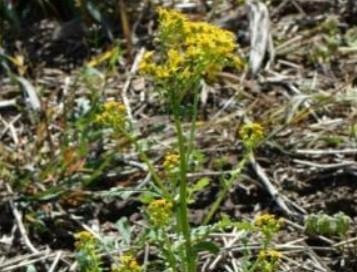When planting winter wheat — also known as Triticum Aestivum — there are many factors that agricultural producers need to consider. In order for these young plants to evolve into crops that thrive in the spring, everything from timing to seed treatment needs to be accounted for in the fall. John Deere machinery can make the planting process easier, but it’s still critical to understand the essentials of planting this crop before beginning.

What are the Characteristics of Winter Wheat?
Winter wheat is hardy, and it even requires cooler temperatures in order to thrive and reproduce. This type of wheat is typically planted in the fall, and when cared for properly, it remains in a vegetative state throughout the winter. During the spring, it resumes its growth process.
Spring Wheat vs Winter Wheat: What’s the Difference?
Interestingly, the vegetative traits of winter and spring wheat are relatively similar. However, winter wheat is known for being able to withstand freezing temperatures over an extended period of time, specifically during its seedling phase. In fact, near-freezing temperatures actually encourage the reproductive development of winter wheat.
When is the Best Time to Plant Winter Wheat?
The best time to plant winter wheat is in the fall, but depending on the field and location, the timing may vary. Agricultural producers need to avoid planting the seed in moist conditions to prevent the wheat from germinating and emerging from the soil. However, they need to get the seed in the ground early enough in the season to encourage the growth of tillers and roots. Seeding often begins in September but can start as early as August in some areas. Other regions can plant as late as October.
5 Important Considerations for Planting Winter Wheat
To ensure the highest yield when spring rolls around, winter wheat planters need to take the following factors into account in the fall.
Seed Early
Seeding early heightens the chances of the winter wheat surviving the cold weather. When winter wheat is given enough time to grow well-developed crowns, it is in a better position to thrive.
Seed Heavy
A higher seeding rate can create a heavier, more uniform stand. This can be beneficial in areas with high moisture and ultimately help the winter wheat survive.
Seed Shallow
Seeding too deeply can delay the emergence of winter wheat. The plant itself may also be spindlier and more susceptible to winterkill. Seeding shallow can help winter wheat take advantage of moisture and thrive.
Seed Slowly
Winter wheat often grows and performs more optimally if it is seeded at speeds near four miles per hour rather than six miles per hour.
Use a Seed Treatment
A fungicide/insecticide treatment can help if winter wheat is being grown in an area where disease is a possibility. Ultimately, these products can increase the chances of seed survival.
Click here to see more...